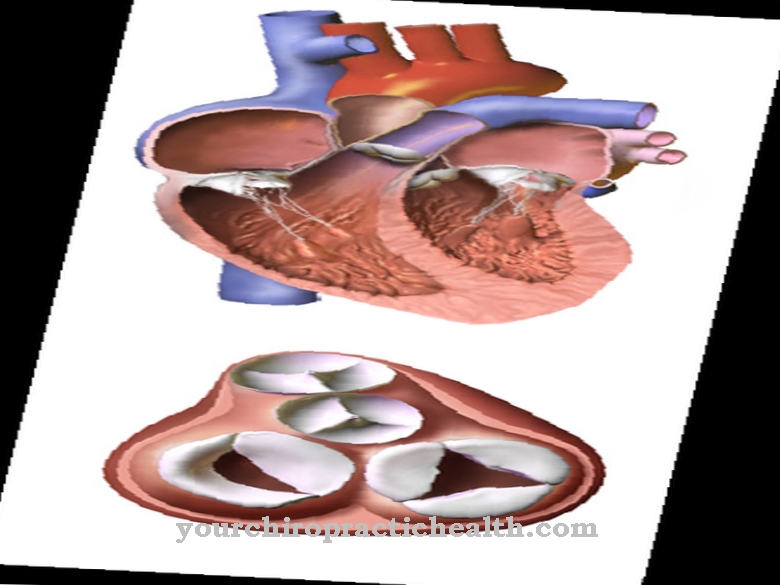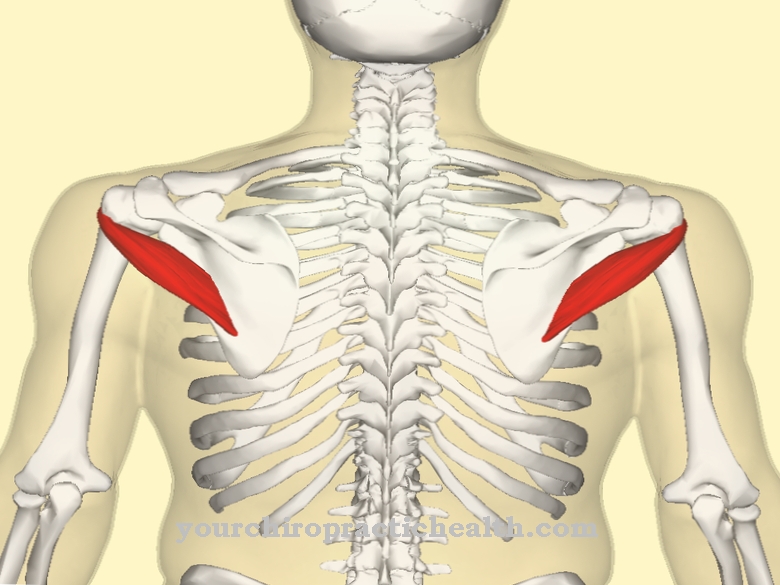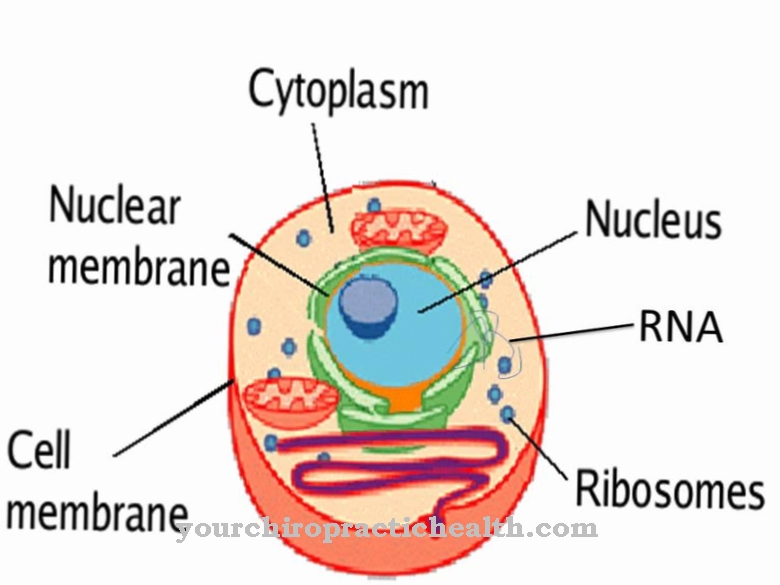Default mode network, short DMN, describes the neural network in the human brain at rest. When people turn to specific tasks, brain activity differs from that in the resting state, which is characterized by daydreams, loose associations and wandering thoughts. The specific resting state brain activity pattern was only discovered in 2001.
What is the Default Mode Network?
The Default Mode Network is a brain anatomical finding. Separate brain regions are simultaneously activated in the resting state and show the activity patterns characteristic of DMN. The diagnostic method for visualizing the DMN is functional magnetic resonance imaging.
Hemoglobin, the oxygen transport molecule in the blood, sends out different magnetic signals depending on the oxygen charge. Functional magnetic resonance imaging therefore illustrates changes in blood flow and metabolic processes in the individual brain areas and thus led to the discovery of DMN. The idea that the brain never rests is old. In the past, the electrical activity of the brain could be visualized by electroencephalography. However, the anatomical description of the DMN is a very recent research result: Marcus E. Raichle and colleagues coined the term in a scientific publication in 2001.
With the description of a normal resting state of the brain, the discovery of deviant, possibly pathological states has also become possible. Current research examines the effects of drugs, neurological diseases, and certain types of behavior, such as meditation, on DMN.
Anatomy & structure
An important part of the DMN is the medial temporal lobe. Related to this is activity in the medial prefrontal cortex. The integration of the two different subsystems in the brain takes place via the posterior cingulate. The angular gyrus also plays a role.
In addition to this frontal part of the DMN, there are other parts that take on specific functions during the idle state. So there is a related system of activities in the medial-dorsal part of the brain. These include the dorsal medial part of the prefrontal cortex, the temporoparietal junction area, and the lateral temporal cortex. The frontal temporal lobes also belong to this subsystem.
Another system of activity includes the hippocampus, the parahippocampus, and the retrosplenial cortex. The posterior parietal lobe also contributes to this subsystem. The activity patterns in the listed anatomical areas are primarily integrated via the frontal region. The anatomical detection of the DMN is also possible in monkeys. People don't have DMN until they are around 9 to 12 years old.
Function & tasks
The DMN is active when the brain is not being used to perform specific tasks. When starting specific tasks, parts of the DMN are deactivated. A new activity pattern emerges, the Task Positive Network, or TPN for short, to carry out specific tasks. An important function of the DMN is to enable this transition between the idle state and the TPN.
The areas of the brain required for the completion of tasks are only released for these tasks when the DMN is deactivated. In addition to this dynamic function for the orderly transitions between DMN and TPN, the DMN fulfills important tasks in the idle state. When people daydream and let their thoughts wander seemingly aimlessly, their identity solidifies. On the one hand, they think about themselves and thus form an autobiographical memory; on the other hand, they also think about other people and thus strengthen their ability to empathize. Finally, aimless thoughts also lead to a better understanding of the past and plans for the future. In yoga and meditation, there is even an intentional activation of the DMN. During sleep, the DMN is associated with the appearance of dreams.
You can find your medication here
➔ Medicines against memory disorders and forgetfulnessDiseases
Medicines, drugs, and certain diseases change the appearance of the DMN. In schizophrenia, there may be insufficient deactivation of the DMN in the transition to the working state (TPN) of the brain. Autistic people probably only have a poorly developed DMN.
An altered pattern of DMN activity occurs in patients with Alzheimer's disease. Many other diseases and pathologies, similar to schizophrenia, manifest themselves through incomplete deactivation of the DMN during the transition to the TPN. Although the subject has not yet been well researched, there is data pointing in this direction, including for attention deficit / hyperactivity disorder (ADHD), depression, and post-traumatic stress disorder.
Presumably all illegal drugs and permitted drugs that influence the state of consciousness and sleep have one or the other influence on the DMN. Codeine, an opiate found in many everyday drugs, including some cough syrups, has been shown to affect DMN activity patterns. The numerous psychotropic drugs, i.e. sleeping pills, tranquilizers and antidepressants, presumably also have negative effects on DMN and TPN. The hallucinatory drug psilocybin interferes with the deactivation of DMN in the transition to TPN. Perhaps drug and intoxication experiences in general also have their cause in a malfunction of the DMN and TPN networks.
What do psychiatrically healthy people who take neither drugs nor medication do with the research results on DMN? The central message to all healthy people is that on the one hand there are times when thoughts are literally free, and on the other hand times when the increased attention to completing a certain task makes it necessary to switch off all too associative thoughts. Modern working environments are designed in such a way that employees do not get distracted while completing certain tasks. To let your thoughts wander, there are extra rooms available. Multitasking is intended for computers, not the human brain.













.jpg)

.jpg)
.jpg)











.jpg)